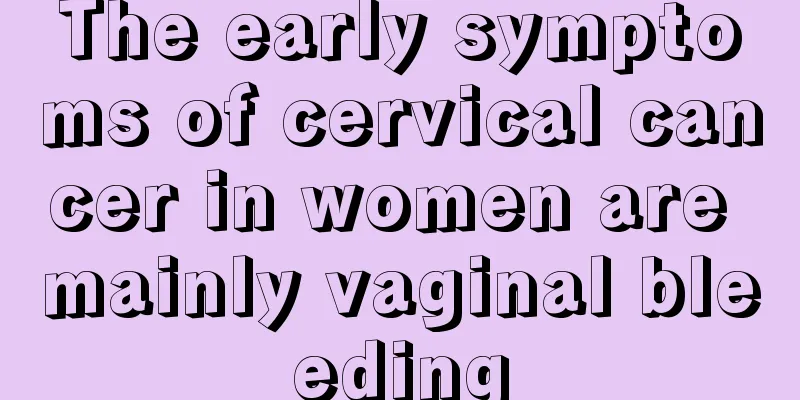Is inversion of the foot serious?

|
Clubfoot occurs mostly in infants, and this disease is a congenital disease, so it has a lot to do with the baby's nutritional intake while in the mother's womb. Therefore, parents should observe whether their baby's feet have inversion while taking care of their baby, because the earlier the inversion is treated, the more likely it is to be cured. Is inversion of the foot serious in babies? Varus deformity is a subluxation of the calcaneocavicular joint that fixes the foot in an adducted, supinated, and varus position. Newborn babies have smaller heels on one or both sides, the forefoot is adducted and inverted, the skin wrinkles on the inner side of the foot increase, the outer and dorsal sides of the foot are stretched and thinned, and the heel cannot be laid flat like a horseshoe. This is congenital clubfoot deformity. Foot inversion (externalization) is mostly caused by the fetus's feet being under pressure in the uterus and being in an abnormal posture for a long time, resulting in abnormal shape. There are genetic factors and it is a polygenic inheritance. Most children have mild cases, and the deformity and abnormal posture of the feet can be easily restored after delivery. No treatment is required, and the prognosis is very good. In severe cases, if the patient is fixed in an abnormal posture, it will hinder walking. The health, intelligence and life span of the children are generally normal. treat Treatment should be started as soon as possible after birth. Manual correction is suitable for the neonatal period. The manual correction operation should be gentle. One hand fixes the heel and the other hand corrects the adduction of the forefoot. Then correct the inversion and equinus in turn. After correction, use tape to fix and maintain the corrected position. The base of the toes and forefoot should be padded, and the heel, inner ankle and knee joints should also be protected. Treatment takes about 6 to 10 weeks. After manual correction, infants over 6 months old can be fixed in the corrected position with a long leg plaster. Change the plaster once a month, which takes about 9 to 12 months. When using plaster fixation, care should be taken to prevent compression and blood circulation obstruction. When the child walks, the outer side of the heel should be raised by about 0.5 cm to consolidate the therapeutic effect. Children aged 1 to 3 years can be treated with surgery, which can be divided into two main categories: (1) Soft tissue surgery includes lengthening the Achilles tendon and incising the posterior ankle capsule to correct equinus deformity, releasing the medial soft tissue to correct inversion of the foot, and tendon transposition to maintain foot muscle balance. (2) Bone surgery is suitable for children over 10 years old, including various osteotomies and arthrodesis of the foot to correct deformities and stabilize joints. Since there are many types of surgeries for treating congenital clubfoot and their effects vary, doctors often have to make choices based on the specific circumstances of the child. The principle of surgery is to remove or release all pathological contracted soft tissues that hinder correction. Such as Achilles tendon lengthening, plantar fascia release, etc. In addition to posteromedial soft tissue release, children aged 3 to 5 years can also undergo calcaneal osteotomy, calcaneocubital joint fusion, tendon transfer, cuboid wedge osteotomy, etc. If the child still has foot pain, poor function and severe deformity after the age of 12, a triple joint fixation can be performed. After the operation, a short leg plaster cast should be used for 3 months until the bone heals before the child can walk. Children with congenital clubfoot have poor dorsiflexion and eversion muscle strength. Tendon transplantation can balance muscle strength. The tendons available for transplantation include the anterior tibialis and posterior tibialis. Theoretically, transplantation of the posterior tibialis can not only strengthen the eversion muscle strength, but also strengthen the dorsal muscle strength. However, clinical observations show that the disadvantages of anterior tibialis muscle transposition include a relatively short path of the posterior tibialis muscle, complicated surgical operation, and easy adhesion at the site when passing through the tibiafibula interosseous membrane in front of the ankle, making the tendon ineffective after transposition; obvious valgus deformity of the foot often occurs after anterior tibialis muscle transposition. Therefore, we advocate the use of tibialis anterior muscle transposition to the third cuneiform bone, unless the tibialis anterior muscle group is completely paralyzed and the tibialis posterior muscle is used to restore the dorsiflexion and eversion function of the foot. |
>>: Where is hyaluronic acid extracted from_Where is hyaluronic acid extracted from
Recommend
What is the role of chemical cellulose?
Cellulose is a nutrient widely found in various f...
What causes hard pimples on lips?
Hard pimples on the lips are mostly caused by get...
Will garlic reduce milk production?
Garlic is a food that people often see in daily l...
How to change your personality
Different people have different personalities, an...
How to eat yam beans and their benefits
Yam beans are similar to yam. Yam beans have the ...
What's going on when I suddenly cough up blood?
Suddenly coughing up blood is usually caused by b...
What are the symptoms of moderate depression and can it be cured?
In our country, more and more people suffer from ...
Where is the center of gravity of the human body
In daily life, especially when riding two-wheeled...
Why are armpits black
The armpit, a part of the human body, is commonly...
Frequent heartburn may alert you to laryngeal cancer
Many people think of heartburn as gastritis, esop...
What to do if bladder cancer metastasizes to prostate cancer
It may cause prostate cancer, but it will not cau...
The cure rate for stage 2 breast cancer is very high
Treating breast cancer in its early stages can si...
What are the three most feared signs of advanced lung cancer?
There is no saying that "there are three mos...
Beware of the early symptoms of lung cancer
The symptoms of lung cancer are not special in th...
Diet therapy for patients with colon cancer
When you have colon cancer, you must pay attentio...









